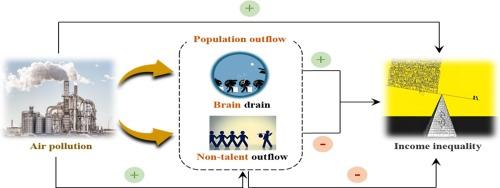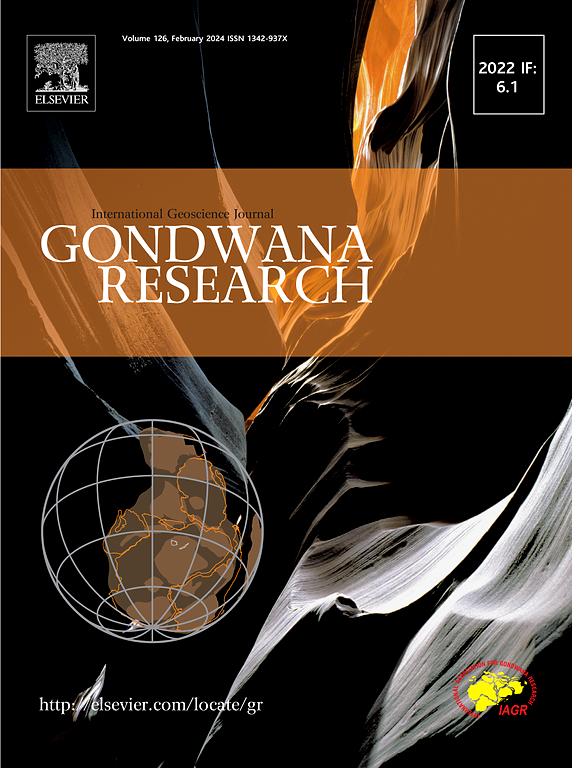How do air pollution and population migration influence income inequality in China
IF 7.2
1区 地球科学
Q1 GEOSCIENCES, MULTIDISCIPLINARY
引用次数: 0
Abstract
This study aims to investigate the impacts of air quality and population migration on income inequality in China. It introduces a general equilibrium model that air pollution triggers population outflow. The findings reveal that both absolute and relative air pollution cause population outflow and exacerbate income inequality. Using panel data of 292 Chinese cities in 2001–2020, this study finds that deteriorations in air quality—both in absolute and relative terms—widen the income gap but can mitigate income inequality through population outflow. Robustness tests support these findings. This study also uses data from A-share listed companies in China from 2010 to 2020 to explore the nexus between air pollution, human capital, and income inequality. It finds that increased absolute and relative air pollution decrease human capital and increase income inequality. Furthermore, a decrease in employee human capital (non-talents outflow) reduces intra-company income gap. This decrease is caused by a decrease in senior executives’ earnings compared to an increase in general employees’ compensation. However, a reduction in the human capital of senior executives (talents outflow) increases income inequality by boosting the earnings of senior executives.

空气污染和人口迁移如何影响中国的收入不平等
本研究旨在探讨空气质量和人口迁移对中国收入不平等的影响。引入了空气污染引发人口外流的一般均衡模型。研究结果表明,绝对空气污染和相对空气污染都会导致人口外流,加剧收入不平等。利用2001-2020年中国292个城市的面板数据,本研究发现,空气质量的绝对和相对恶化扩大了收入差距,但可以通过人口外流缓解收入不平等。稳健性测试支持这些发现。本文还利用2010 - 2020年中国a股上市公司的数据,探讨空气污染、人力资本和收入不平等之间的关系。研究发现,绝对和相对空气污染的增加降低了人力资本,加剧了收入不平等。此外,员工人力资本(非人才外流)的减少减少了公司内部的收入差距。这种减少是由于高级管理人员的收入减少,而一般员工的薪酬增加。然而,高管人力资本的减少(人才外流)通过提高高管的收入而加剧了收入不平等。
本文章由计算机程序翻译,如有差异,请以英文原文为准。
求助全文
约1分钟内获得全文
求助全文
来源期刊

Gondwana Research
地学-地球科学综合
CiteScore
12.90
自引率
6.60%
发文量
298
审稿时长
65 days
期刊介绍:
Gondwana Research (GR) is an International Journal aimed to promote high quality research publications on all topics related to solid Earth, particularly with reference to the origin and evolution of continents, continental assemblies and their resources. GR is an "all earth science" journal with no restrictions on geological time, terrane or theme and covers a wide spectrum of topics in geosciences such as geology, geomorphology, palaeontology, structure, petrology, geochemistry, stable isotopes, geochronology, economic geology, exploration geology, engineering geology, geophysics, and environmental geology among other themes, and provides an appropriate forum to integrate studies from different disciplines and different terrains. In addition to regular articles and thematic issues, the journal invites high profile state-of-the-art reviews on thrust area topics for its column, ''GR FOCUS''. Focus articles include short biographies and photographs of the authors. Short articles (within ten printed pages) for rapid publication reporting important discoveries or innovative models of global interest will be considered under the category ''GR LETTERS''.
 求助内容:
求助内容: 应助结果提醒方式:
应助结果提醒方式:


